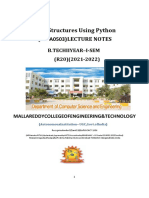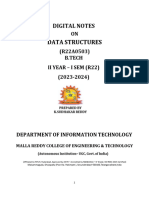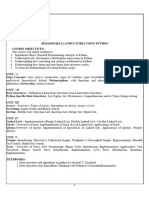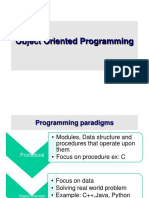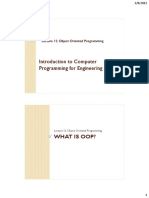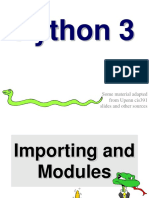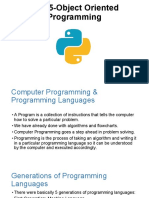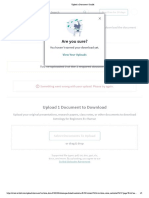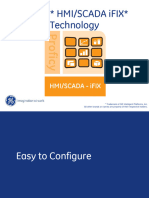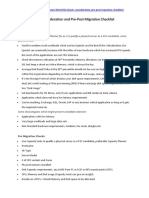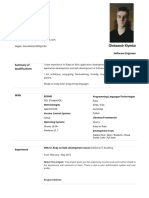0% found this document useful (0 votes)
41 views24 pagesLecture 7 OOP0
The document discusses programming paradigms, focusing on Object-Oriented Programming (OOP) and the concepts of classes and objects in Python. It explains how classes serve as blueprints for creating objects, detailing the syntax for class definitions and the role of constructors and the 'self' parameter. The document also illustrates these concepts with examples, emphasizing the importance of OOP in structuring software programs.
Uploaded by
ddskflkCopyright
© © All Rights Reserved
We take content rights seriously. If you suspect this is your content, claim it here.
Available Formats
Download as PDF, TXT or read online on Scribd
0% found this document useful (0 votes)
41 views24 pagesLecture 7 OOP0
The document discusses programming paradigms, focusing on Object-Oriented Programming (OOP) and the concepts of classes and objects in Python. It explains how classes serve as blueprints for creating objects, detailing the syntax for class definitions and the role of constructors and the 'self' parameter. The document also illustrates these concepts with examples, emphasizing the importance of OOP in structuring software programs.
Uploaded by
ddskflkCopyright
© © All Rights Reserved
We take content rights seriously. If you suspect this is your content, claim it here.
Available Formats
Download as PDF, TXT or read online on Scribd
/ 24
